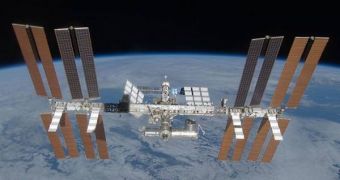A top Russian space official has recently announced that the Russian Federation plans on keeping its International Space Station modules flying when the station is dismantled. While this is scheduled to happen in 2015, chances are that the life of the orbital facility will be prolonged until 2020, or maybe even 2025. Nations involved in the initiative are currently discussing available options. But the Russians are already planning ahead, and say that they will use the modules they contributed to the ISS with as a platform for a new orbital facility, which could remain in orbit indefinitely.
The current design of the station has one major disadvantage, one that engineers have known from the get-go. The structure, as a whole, is not designed with changeable pieces. This means that, if the space agencies in the project want to replace a module that is at the core of the station, they cannot do it, because it would mean breaking the station in half. This is also one of the main factors that make the station unable to continue its mission for longer time frames. Damage to the components will at some point become critical, and there's only so much spacewalks and repair missions can do.
On the other hand, Russian company RKK Energia, which is the main ISS contractor for the Russian Federation, announced that it had already begun constructing a new module, which would be shaped like a sphere. It will feature six docking ports, which means that it will be the hub of the new station. This type of construction will allow for the attached modules to be changed according to needs, without having to scrap the new station altogether. Thus, the structure will be able to function for much longer, and will only be retired when damage to the core will become critical.
“We flew on Mir for 15 years and accumulated colossal experience in extending the service life [of space stations]. I don't see any problems, with the exception of penetration of the module's skin by a meteoroid. [The station] can fly twenty or thirty years and, if we don't have a direct hit, we can replace practically every internal component. We learned a lesson from Mir that anything that can fail in this period of time can be replaced,” said a senior RKK Energia space official, quoted by the BBC News.
Because separating the Russian modules from the ISS at the end of its life would mean that the station will be left without any propulsion, and therefore without the ability to plunge into the atmosphere in a controlled destruction sequence, RKK turned to the European Space Agency (ESA) and its Automated Transfer Vehicle (ATV). The instrument has sufficient power, the official says, to dock to the ISS and take it off its stable orbit.

 14 DAY TRIAL //
14 DAY TRIAL //